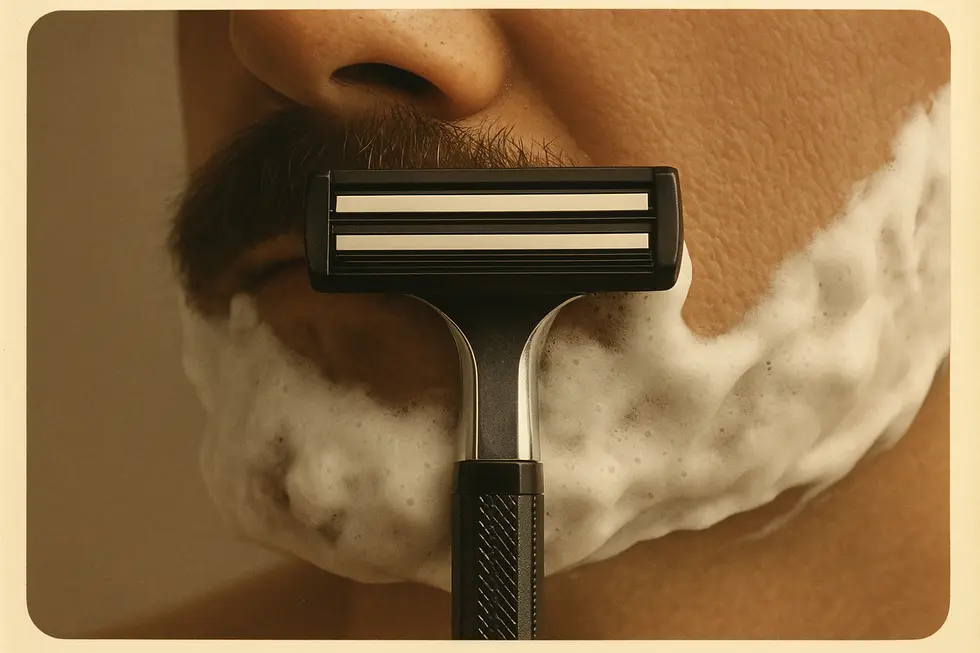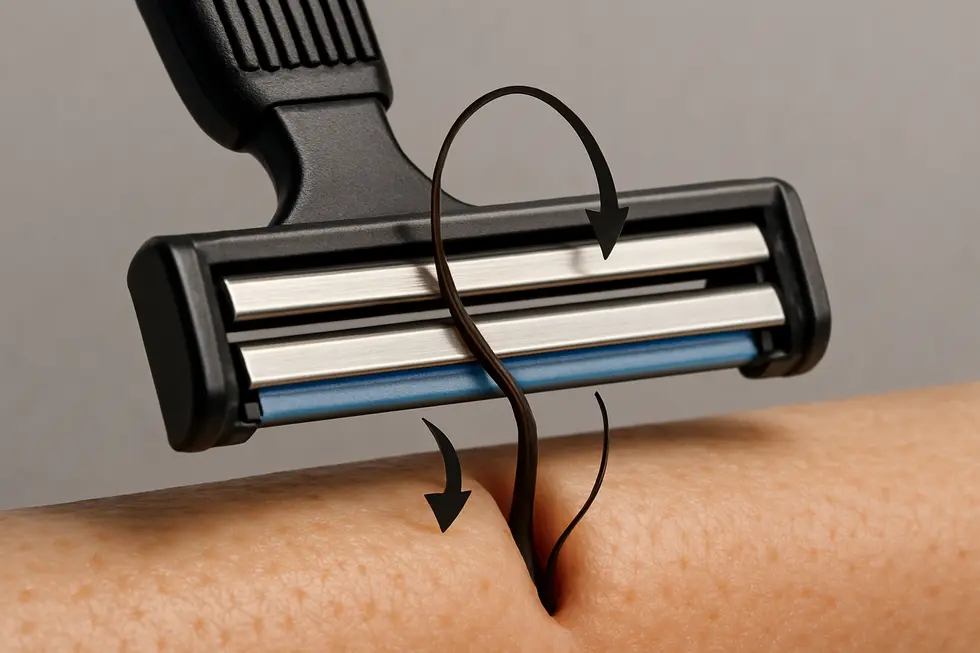No products in the cart.
For men, Gillette, Personal Care News
Gillette Revolution: How the Twin-Blade Razor Changed Shaving
Gillette revolution began in 1971 with the launch of the Trac II—the world’s first twin-blade razor. This breakthrough changed the shaving industry forever, offering a smoother, more comfortable shave and setting a new standard for grooming products. This article explores the innovation behind Trac II, its impact on razor design, consumer adoption, and how it shaped the competitive landscape. A must-read for grooming history buffs, retailers, and wholesale buyers.
Table of Contents
The Dawn of Gillette’s Twin-Blade Innovation: Trac II

In 1971, Gillette introduced a groundbreaking product that would forever change the landscape of shaving technology: the Trac II razor, heralded as the first fixed-head twin-blade system. This innovation emerged as a pivotal moment in the industry, promising a shave that was not only closer but significantly more comfortable compared to the single-blade razors of the time.
The genius behind the Trac II lay in its dual-blade design. By placing two blades in close proximity, Gillette engineered a system where the first blade gently lifted the hair, allowing the second blade to cut more thoroughly and smoothly. This method was revolutionary, as it considerably reduced skin irritation and the uncomfortable hair-pulling sensation often associated with shaving. Such a design laid the foundation for the multi-blade razors that dominate today’s market, establishing new standards for shaving efficiency and comfort.
The introduction of the Trac II did not merely enhance daily grooming routines; it set a precedent that would inspire future innovations within the industry. As a staple in Gillette’s product lineup, the Trac II exemplified the company’s commitment to advancing personal care technology. For those interested in exploring resale opportunities or adding to their market offerings, insights can be found here.
Breaking New Ground: The Design and Legacy of the Gillette Trac II

The introduction of the Gillette Trac II in 1971 was nothing short of a shaving revolution. As the first razor to feature a twin-blade cartridge system, it overshadowed the traditional single-blade models by providing a far more efficient shaving experience. The Trac II leveraged the strategic placement of two parallel blades, creating a mechanism where the first blade would lift and the second would shear the hair close to the skin. This innovation minimized irritation and the need for multiple passes—a significant improvement for daily shavers.
Beyond its blade innovation, the Trac II introduced a user-friendly cartridge system that redefined shaving convenience. Unlike the cumbersome safety razors of the past, it allowed users to easily snap in a fresh cartridge, promoting better hygiene and extending the life of the razor. The handle was ergonomically designed for balance and control, further elevating the user experience. This marked a shift in consumer expectations, catalyzing a wave of ongoing innovations not only by Gillette but across the shaving industry.
Today, the influence of the Trac II is visible in modern multi-blade razors and tech-infused shavers. It set a standard that continues to inspire Gillette’s competitive and innovation-driven spirit.
The Cutting-Edge Technology Behind Gillette’s Trac II

The launch of Gillette’s Trac II razor in 1971 marked a pivotal moment in shaving technology, introducing a dual-blade system that transformed the grooming industry. This innovative design was groundbreaking because it provided a closer and more comfortable shave than its single-blade predecessors. By strategically placing two blades close together, the Trac II enabled the first blade to slightly lift the hair while the second blade cut it closer to the skin. This approach dramatically improved shaving efficiency, reducing the need for multiple passes over the same area of skin, which in turn minimized irritation and enhanced comfort.
The Trac II’s dual-blade system also featured an easy-loading cartridge that simplified blade replacement and maintenance, making it a user-friendly option. This convenience, paired with the improved shaving experience, catapulted the Trac II into immense popularity, setting new standards for the industry. It not only revolutionized personal grooming by offering unmatched performance but also paved the way for the development of future multi-blade razors.
Impactful Debut of the Trac II and its Legacy in Razor Technology

The introduction of Gillette’s Trac II in 1971 was nothing short of a watershed moment for shaving technology. For the first time, consumers encountered a razor that promised not just a closer shave, but a more comfortable one. The Trac II’s innovative twin-blade system was designed to lift hair with the first blade and cut it efficiently with the second, drastically minimizing irritation. This approach fundamentally transformed shaving into a smoother, more pleasant experience, significantly influencing consumer perceptions and expectations.
Upon release, the market reception of the Trac II was overwhelmingly positive, reflecting consumers’ enthusiasm for a product that delivered on its promises without demanding drastic changes in shaving habits. Instead of traditional blade sharpening or frequent replacements, the convenience of disposable cartridges attracted users who sought ease and efficiency.
Gillette’s strategic marketing campaigns capitalized on these advantages, positioning the Trac II as a premium product in the grooming arena. This not only helped Gillette cement its leading position in the competitive razor market but also set a benchmark that competitors would strive to reach.
The success of the Trac II shaped future innovations, ushering in an era of cartridge-based razors with more blades, ergonomic handles, and pivoting heads. It also paved the way for further advancements, such as lubrication strips and skin protection features, molding the evolution of modern razors. For more insights into Gillette’s pioneering role, explore Gillette’s wholesale export strategy.
From Twin-Blades to Multi-Blades: The Evolutionary Path Shaped by Gillette’s Trac II

The introduction of Gillette’s Trac II in 1971 marked a transformative moment in the history of shaving technology. As the first commercially successful twin-blade razor, it set the stage for a series of innovations that would reshape industry standards. With two blades working in tandem, the Trac II provided a breakthrough in shaving efficiency by minimizing skin irritation and enhancing precision.
The resulting industry’s shift toward multi-blade systems can all trace its roots back to this initial change. Subsequent designs branched off to include three or more blades, each iteration promising an even closer shave with fewer strokes. Pivoting heads soon followed, adapting to facial contours with ease, while lubricating strips added a new layer of skin protection. Ergonomic handles improved grip, ensuring greater control. These enhancements collectively positioned the modern razor as a high-performance grooming tool, designed for maximum convenience.
Gillette’s creation not only transformed consumer expectations but also democratized the shaving experience via disposable cartridge systems that made blade replacement seamless. This fundamentally altered the market, encouraging even historically reluctant users to embrace these efficient methods. Through the lens of history, the Trac II emerges not only as a technical marvel but also as an influential figure whose legacy continues to influence innovations across the shaving industry today.
For insights into Gillette’s broader influence, explore ideas for Gillette’s resale business.
Final thoughts
The introduction of Gillette’s Trac II in 1971 was a pivotal moment in the history of shaving, setting a precedent for future innovations in razor design. Its twin-blade technology has influenced countless subsequent products, continually pushing the boundaries of comfort and efficiency in shaving. Understanding this landmark development provides invaluable insights into the ever-evolving landscape of personal grooming.
👉 Looking for a trusted Gillette wholesale supplier? Contact Asia Grocery Co., Ltd for bulk deals and export-ready inventory.
About us
Asia Grocery Co., Ltd is a trusted distributor, wholesaler, and exporter of fast-moving consumer goods (FMCG) from Vietnam, backed by over 20 years of expertise. We deliver authentic products from globally recognized brands such as P&G, Unilever, Redbull, Coca-Cola, Pepsi, Asiadeli, along with traditional and culturally significant Asian products, catering to customers worldwide with a special focus on Vietnamese and Asian communities abroad.


